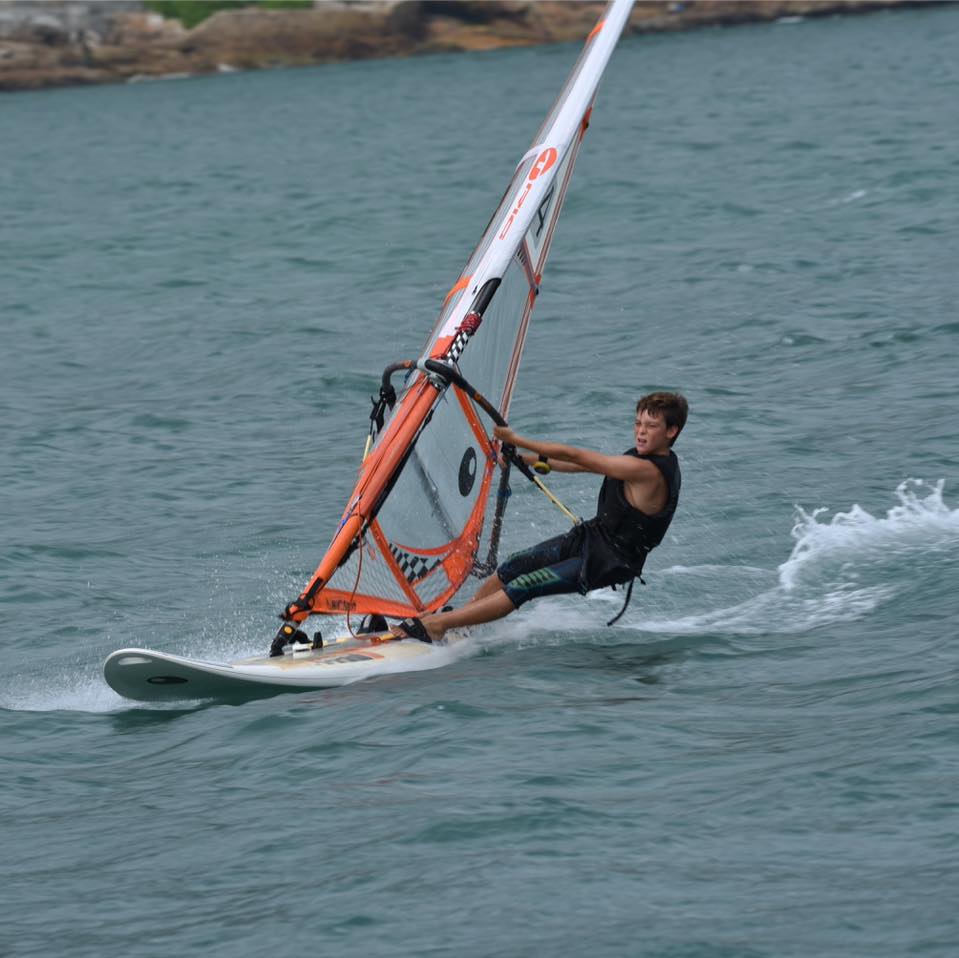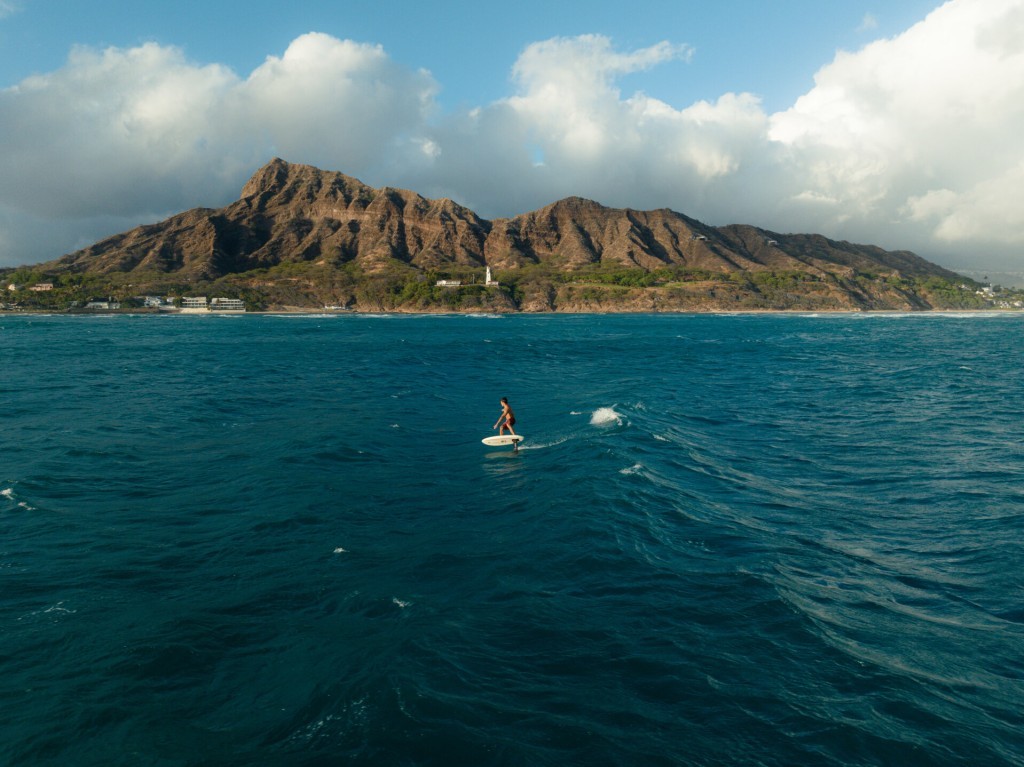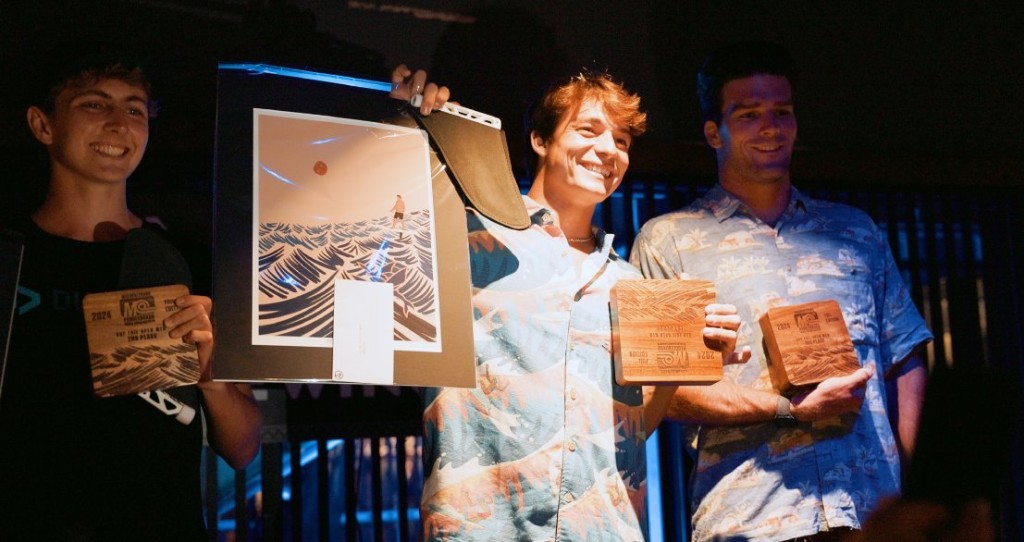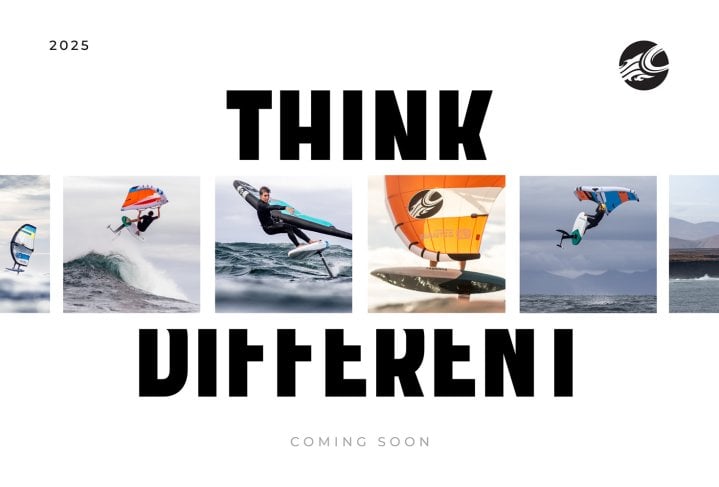
The Interview – Edo Tanas
Sun 8th Dec, 2024 @ 8:41 pm
We sat down with Edo Tanas, winner of the 2024 Moloka’i 2 O’ahu (M2O) World Championships and the 2024 Triple Crown in downwind SUP foil. This sport is among the most physically and technically demanding disciplines within foiling right now, so we were eager to learn about Edo, his training, and his races.
Hi Edo! Firstly, massive congratulations on your success in the summer. I was not watching and following live feeds throughout! What was your training like in preparation for the races? Do you always focus on going fast downwind, or do you mix up your training runs by practising different skills?
Thank you, Jack! I was happy with my preparation and how it reflected in my race’s performance. I am on the water 95% of the days in a year and foiling 90%, so there is no real off-season. However, I beefed up my training about 5 months before the race season. During that period of time, I focused on improving and maintaining a balance of my physical, mental and foiling performance. My regular training regimen has been going to the gym every morning for 30-45 minutes to lift weights, alternating between upper and lower-body workouts. I would then go to work, and as soon as I got off, I would run 10-15 km every afternoon; after that, I would either go on an hour hike or a 30-minute run. Lastly, once a week, I would do a long run of 1:30 hours, trying to replicate the longer races and getting my nutrition and hydration dialled. I would take 1-2 days off weekly if I felt it was much needed (always listening to my body). This training was supplemented by a lot of stretching, and home-cooked meals, personally I don’t eat a lot of carbs or sugar (that’s what works for me). 80% of my foiling training was at a racing pace, pushing as hard as I could. The rest of the time I would be focusing on bump reading efficiency, popping up, pumping/paddling technique, and testing new equipment prototypes.
You certainly keep yourself busy! Do you have any strategies for coping with nerves leading up to the event, especially when foil size choice is on the line?
I definitely think treating training runs like a race allows you to test yourself to the best of your ability. Keeping a log of which foil you used in which conditions and how it felt can be very beneficial to confidently choosing your foil on race day. Practice gives you confidence and knowledge about what you are able to do and how small of a foil you can ride. Aside from practice, there has to be a lot of mental preparation, a good mindset to have is that you are how you are on race day and nothing can be changed. The only thing in your control at that point is giving it your all, which is a must-do with respect to yourself and the hard work you put in leading to that moment.
What type of leash do you use? Are you aiming to save weight in any other areas?
I use a leash I made myself. It is a dyneema rope spliced with elastic. I wrap it around my waist and make sure it’s the perfect length to stay tight when I’m standing. It’s strong and simple. I don’t mind weight where it’s necessary (water, nutrients); I like simplicity. I don’t need a fancy lifejacket or water pack; I just like to keep it simple and compact.
Tell us about the paddle choice of a world champion… Is it a similar height to you or shorter/taller? Do you like it super stiff or a little flex? Do you prefer a bigger blade area for power or a smaller one for a higher cadence?
I like the eyebrow/forehead height on my paddles. It feels short enough to have a high stroke cadence but long enough to be able to pump the paddle when up on foil. I prefer a stiffer shaft so that I can get more power out of it. I am not too concerned about injuries as long as I keep up with my physical preparation. I can still achieve a high cadence with a 90-95 size blade, and it seems to be a perfect match for the power I can generate.
It looks as though you’re super efficient at paddling while pumping/on foil. Do you train for that technique? Do you ever worry about hitting/ snapping your paddle on the foil?
Thank you for noticing that; I definitely train that a lot; I believe paddle pumping is one of the biggest keys in downwind foiling. Overall, mastering paddle pumping allows you to ride a smaller foil which uses less drag through the water and can attain higher speeds. Using your paddle in sync with regular leg pumping allows for more torque to get up and over waves, more speed, and fill in gaps where there are no waves to ride. I have snapped a few paddles before, but practice improved my awareness and it hasn’t happened anymore.
What’s your go-to fuse length? Can you talk our readers through the pros/cons of longer vs shorter?
A fuselage (fuse) can change your ride dramatically.
Choosing the best fuse length is a balance between matching one’s skill and riding style with one’s goals. Ask yourself the question: Do I want efficiency and glide or aggressive manoeuvrability and acceleration?
I personally choose to go with the smallest option I can still control at high speeds.
Short Fuse
- Positives:
- Responsive
- Sharp turns
- Enhance manoeuvrability if you can handle it
- Higher pumping cadence
- Fast acceleration
- Negatives:
- Pitchy
- Harder to control at high speeds
- Sharp movements disrupt the flow of water
- Slow you down
Long Fuse
- Positives:
- More control
- Maintains speed for longer
- No abrupt changes allow for a steady/efficient glide
- Does not disrupt the flow of water
- Negatives:
- Less responsive
- Wide turns
- Low pumping cadence
- Less acceleration
That’s really insightful, thanks Edo! The M2O was clearly a huge physical effort; time-wise, it’s not dissimilar to running a marathon. Did you have a nutrition plan for the race? Or did you just eat what you could when you could? Is there anything you’d change for next time?
Before the race, I stayed hydrated and ate food I knew was an easily digestible, clean supply of energy. (The best diet will be different for everyone). During the race, I had electrolytes in my water packs, 3 carbohydrate gels I kept in my pocket, and one caffeine gel in case I needed an extra push at the end. I spaced out my gel consumption to have one every 30 minutes, and I would remind myself to drink water regularly to avoid cramping. Next time I would do the same except I would like to have a cramp relief supplement.
Clearly, your time racing RSX windsurf played a big part in your success in downwind SUP. Can you be specific about the skills that you think transferred over?
Growing up windsurfing in the Techno 293 and RS:X categories taught me a lot. It was always a very competitive field, and physical preparation was a huge component of doing well in those competitions. I had to learn the importance of exercise, nutrition, and recovery at a young age. Windsurfing taught me the connection between mind and body and the importance of listening to myself. These components were key to creating the perfect training plan to become the downwind foiling world champion.
Do you think downwind SUP racing can be learned from sailing/windsurf racing? If so, what?
Definitely, sailing races are very fair and professional. Sailing races have been around since 1851, while downwind foiling only since 2019. There are strict starting procedures with times, there are judges to ensure fair racing and rules which can penalize or disqualify competitors for breaking rules. Downwind foiling racing is at its early stages and definitely will need to incorporate more rules for fair racing in order to progress, with hundreds of competitors starting together and going the same direction side by side, rights of way need to be established.
Couldn’t agree more. I believe you used a super small (600cm2), super high aspect foil for the M2O. Is technology still improving to the point where you think athletes will be on even smaller foils next year?
I believe technological advances in foiling are starting to slow down and evening out across the board. Some improvements will definitely be made, but not as drastic as we have seen in the past few years. I believe that no matter the technological improvements, athletes and their skills will improve, even myself. In the past few months, I’ve been able to ride even smaller foils by tweaking my technique to improve efficiency and maintain a faster speed at all times and get away with a smaller foil.
Did you find it tricky to balance board length for paddling up and weight for pumping? What size board did you choose?
My rule of thumb is to ride the smallest board possible so that I can flatwater start the smallest wing I plan on riding. In my case, I was able to flatwater start a 600cm2 front wing with an 8’0″, 106l board. A longer board would cause unnecessary swing weight and loss of manoeuvrability, while a smaller board would not have allowed me to pop up in case of unfavourable conditions.
I’m sure you’re already in training for next summer. Are there any races planned before then?
There are races all around the world, but I won’t be able to leave the US until my US visa gets approved unless I want to jeopardize my dream of living in Hawaii. (That’s why I missed the last race in France.) However, I am sure some local races will be announced in Hawaii sometime soon and will continue until summertime.
I hope it gets approved! Finally, do you see the potential of a world tour in downwind SUP foiling?
Definitely, I have thought about using my racing expertise and forming an international tour myself. Looking at sports around us, surfing has the WSL, wing foiling the GWA, and windsurfing the PWA. Downwind foiling has huge potential, and the numbers show it. I want to stay at the forefront of its growth. I truly believe it has huge potential to be one of the biggest water sports in the world. This is just the beginning.
Year: 2019
- Molokai Holokai: 14
- Molokai to Oahu: 12
Year: 2020-2022
- Molokai Holokai: Covid-19 – Canceled
- Molokai to Oahu: Covid-19 – Canceled
Year: 2023
- Molokai Holokai: 44
- Molokai to Oahu: 50
Year 2024
- Molokai Holokai: 124
- Molokai to Oahu: 96
Thanks so much for taking the time, Edo; I hope to meet you on the water one day!
Interview with Edo Tanas
Words: Jack Galloway
9th December 2024
Sun 8th Dec, 2024 @ 8:41 pm










